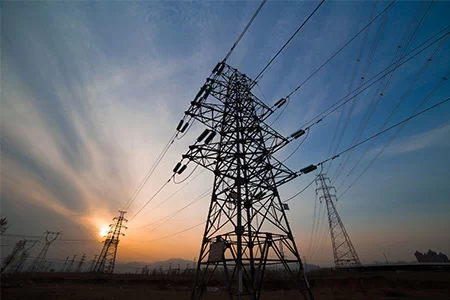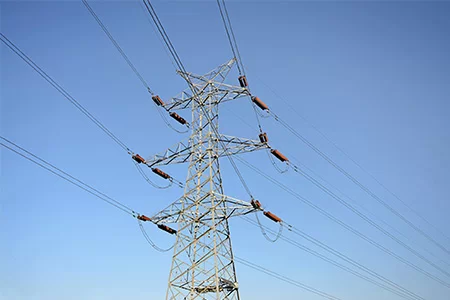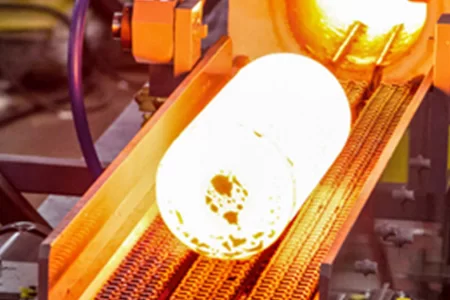By sharing knowledge, experience and views in the field of forging technology, we help you understand, learn and apply relevant technologies.

Hulk Metal Forging Technology
Share technical experience
-
Home>
-
Blog>
-
Technology>
Wire grip performance test method

In power engineering and other applications involving cables, Wire Grips are an important tool mainly used to grasp, tighten, and fix wires or cables to ensure their safety and stability during installation and maintenance. In order to ensure that Wire Grip performs well and is safe in actual work, it is necessary to conduct strict performance tests and introduce specifications. The following is a detailed expansion of the performance test method and specification introduction of Wire Grip, covering the appearance size, applicable wire diameter, material, and other aspects, as well as how to effectively perform performance tests to ensure its reliability in complex application environments.
Specification introduction of Wire Grip
Appearance size
The appearance size of Wire Grip directly affects its scope of application and ease of operation. Generally, Wire Grip is designed as a long structure to facilitate manual operation and improve stability in use. The size range is usually between a few centimeters and tens of centimeters. Smaller Wire Grip is suitable for thin wires and light cables, while larger Grip is used for thicker cables and higher load operations. When choosing, the appearance size should be selected according to the actual operation requirements to ensure normal use in different environments. The specific size selection should take into account the size of the cable, the need for force application, and the limitations of the workplace. For example, a narrow workspace may require a compact wire grip, while a more open space may choose a larger device to accommodate thicker cables.
Applicable wire diameter
Another key parameter of the wire grip is its applicable wire diameter range. Generally, the wire grip is suitable for wires or cables with diameters ranging from 0.75mm to 45.7mm, which covers the needs of small communication cables to large transmission lines. When choosing the appropriate wire grip model, users should choose according to the specific diameter and load requirements of the cable to ensure that the wire gripper can firmly grasp the cable without damaging it. A grip that is too large may not hold the wire tightly, while a grip that is too small may cause damage to the cable or fail to withstand the working load. Therefore, in engineering projects, it is necessary to select the appropriate wire grip model according to the specific specifications of the cable to ensure safe and reliable installation and maintenance work.
Material
Material is another important factor that affects the performance of the wire grip. High-quality wire grips are usually forged from high-quality alloy steel, which has high strength, corrosion resistance, and excellent conductivity. Since power cables are often exposed to various harsh environments, such as moisture, high temperature, corrosive gases, etc., Wire Grip must have long-term durability. Alloy steel not only provides sufficient mechanical strength to cope with high-load operations but also resists erosion from environmental factors, ensuring long-term stability in different application scenarios. In addition, in order to enhance gripping ability and reduce damage to the cable surface, some Wire Grips may also add coatings or undergo special treatment processes on the surface that contacts the cable.
Effective performance test method of Wire Grip
In order to ensure the reliability of Wire Grip in actual use, performance testing is very necessary. Performance testing is mainly divided into two parts: working performance test and safety performance test. These two tests are aimed at the operating efficiency and safety of Wire Grip respectively, ensuring that its performance meets the standards under different load conditions.
Working performance test
The purpose of the working performance test is to verify whether the Wire Grip can effectively grasp and hold the cable under a normal working load. During the test, the actual use scenario is usually simulated and the same wire as the field application is used for testing. The specific steps are as follows:
- Fix the Wire Grip to be tested on the experimental wire and apply the corresponding working load. The load should be loaded according to the calculated working performance test load.
- After the load is applied, keep it for 10 minutes, and observe whether the Wire Grip can firmly grasp the cable and the cable does not slip or dislocate.
- If the cable remains in place and does not loosen or slip during the 10-minute test time, it means that the working performance of the Wire Grip meets the requirements and can be used safely in actual projects.
Safety performance test
The safety performance test is usually carried out under more stringent conditions to test whether the Wire Grip can maintain its structural integrity and safety when the normal working load exceeds the normal working load. Since the surface of the cable may be damaged due to strong tension or other external factors in actual use, especially the aluminum strands on the surface of the conductor are easy to peel off, affecting the test results, some auxiliary tools are usually used in the safety performance test to simulate the load in the real environment.
- During the test, first prepare an auxiliary tool similar to the actual surface of the conductor, such as round steel wrapped with aluminum. The use of this auxiliary tool can prevent the test results from being affected by the peeling of the conductor surface.
- Then, fix the Wire Grip on the auxiliary tool and apply the calculated safety performance test load. As with the performance test, the load also needs to be maintained for 10 minutes.
- During this period, observe the status of the Wire Grip, focusing on whether it is deformed, stuck, or otherwise damaged. If the Wire Grip maintains structural integrity and does not have functional abnormalities throughout the test, it means that its safety performance is qualified and can be used safely under high load or emergency conditions.
Through the dual testing of performance and safety performance, users can ensure that the selected Wire Grip can not only work stably under normal working conditions but also ensure safety under extreme load conditions. This is particularly important for projects involving high-voltage cables and large transmission lines.
Other key parameters of Wire Grip
In addition to the appearance size, applicable wire diameter, and material, some other performance indicators of Wire Grip are also worth paying attention to:
Clamping force
Clamping force is an important indicator for measuring the performance of Wire Grip, which directly affects whether it can firmly grasp the cable. The required clamping force will be different in different application scenarios. Generally speaking, the clamping force needs to match the diameter, material, and load requirements of the cable. Usually, high-quality Wire Grip will have a certain redundancy in the clamping force design to ensure that the cable can be kept stable and not slip even in extreme situations.
Durability
The durability of the wire grip depends mainly on the choice of its materials and manufacturing process. Since the power construction environment is usually complex and may face adverse conditions such as corrosive gases, high humidity, and extreme temperatures, the wire grip must have excellent durability. High-strength alloy steel undergoes a special heat treatment process, which not only increases its strength and hardness but also improves its fatigue resistance and extends its service life.
Weight and ease of operation
The weight of the wire grip directly affects its ease of use. Overweight equipment may increase the burden on construction workers when in use, especially when working at height or in a small construction space. Therefore, when designing the wire grip, the weight of the equipment is usually reduced as much as possible while ensuring strength and safety. Some high-end products may use lightweight alloy materials while ensuring that their mechanical properties are not affected. In addition, ergonomics are also considered in the design to make it easier to operate and install and reduce operator fatigue.
The application of the wire grip in power engineering is reliably guaranteed through detailed specification introductions and rigorous performance testing. Whether in daily cable installation and maintenance or in more extreme construction environments, choosing the right specifications and fully tested Wire Grip can significantly improve work efficiency and ensure the safety and stability of the cable system. As a professional Wire Grip manufacturer, HULK Metal is always committed to providing high-quality products and verifying their performance in various application scenarios through rigorous testing processes.
Article Navigation
Article Navigation
Industries
Foundries
-

September.14, 2024
Types of Jaw Wire Grip and Suitable Use Scenarios
READ MORE
-

September.13, 2024
Cable grip VS Wire Grip Comprehensive Detailed Analysis
READ MORE
-

September.12, 2024
Do you know the comprehensive analysis of wire grip puller?
READ MORE
-

July.03, 2024
What are the processes of hot forging?
READ MORE






